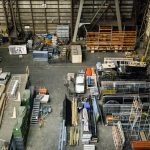Remote monitoring has become an indispensable technology in the modern manufacturing landscape. In the UK, where the manufacturing sector is both diverse and dynamic, leveraging this technology is no longer an option but a necessity. This article will delve into the multifaceted benefits of implementing remote monitoring in UK manufacturing, covering aspects such as operational efficiency, energy management, and predictive maintenance.
Enhanced Operational Efficiency and Control
In the high-stakes environment of UK manufacturing, operational efficiency is paramount. Remote monitoring systems provide real-time data on various operations, enabling managers to make informed decisions quickly. With monitoring solutions in place, you can oversee multiple production lines from a single location, ensuring that every piece of equipment operates within the desired parameters.
Also read : How to Develop a Sustainable Waste Management Plan for UK Manufacturing Plants?
Such systems offer enhanced visibility into your production processes, allowing you to identify and rectify inefficiencies promptly. For example, if a particular machine is underperforming, the system can alert you immediately, enabling swift corrective action. This type of monitoring control minimizes downtime and maximizes productivity, resulting in significant cost savings.
Moreover, data-driven insights from remote monitoring can guide process control improvements. By analyzing patterns and trends, you can optimize workflows and reduce bottlenecks, further boosting operational efficiency. It’s a proactive approach that transforms your manufacturing operations into a well-oiled machine.
Also to discover : What Are the Best Practices for UK Non-Profits to Maximize Fundraising Efforts?
Predictive Maintenance and Reduced Downtime
One of the standout advantages of remote monitoring is its role in predictive maintenance. Traditional maintenance methods are often reactive, addressing issues only after they cause disruptions. Remote monitoring systems, however, provide real-time data that can predict potential equipment failures before they occur.
This predictive capability is especially crucial in the UK manufacturing sector, where unexpected downtime can have severe financial implications. By continuously monitoring the condition of your machinery, you can schedule maintenance activities at the most convenient times, avoiding unexpected breakdowns and minimizing production halts.
Furthermore, predictive maintenance extends the lifespan of your equipment. Regular, data-informed maintenance ensures that each machine operates at its optimum, reducing wear and tear. This not only enhances the efficiency of your operations but also represents a significant cost-saving measure, as it delays the need for expensive replacements.
Improved Energy Management and Cost Savings
Energy consumption is a critical concern for UK manufacturers, both from an environmental and a cost perspective. Remote monitoring systems provide detailed insights into your energy usage, helping you identify areas where you can improve energy efficiency.
These systems can track energy consumption in real time, allowing you to pinpoint energy-intensive processes and implement energy-saving measures. For instance, by monitoring the energy usage of your equipment, you can adjust operating schedules to off-peak hours, thereby reducing energy costs.
In addition to cost savings, improved energy management through remote monitoring contributes to your sustainability goals. Reducing your carbon footprint not only benefits the environment but also enhances your corporate reputation. In today’s market, where consumers increasingly favor environmentally responsible companies, this can be a significant competitive advantage.
Enhanced Supply Chain and Inventory Management
In the context of UK manufacturing, an efficient supply chain and effective inventory management are critical components of success. Remote monitoring systems offer real-time visibility into your supply chain operations, ensuring that materials and components are available when needed, without overstocking.
By continuously tracking inventory levels and supply chain activities, these systems enable you to make data-driven decisions. This can lead to more accurate demand forecasting, reducing the risk of shortages or excess inventory. The result is a leaner, more efficient supply chain that reduces waste and lowers costs.
Moreover, remote monitoring enhances your ability to respond to supply chain disruptions. Whether it’s a delay in material delivery or a sudden spike in demand, having real-time data allows you to act swiftly and maintain smooth operations. This agility is particularly important in the UK manufacturing sector, where market conditions can change rapidly.
Improved Decision Making and Real-Time Data
In any manufacturing environment, timely and accurate decision-making is essential. Remote monitoring systems provide a wealth of real-time data that can inform your decisions at every level of the organization. From production managers to C-suite executives, everyone benefits from having access to up-to-date information.
This data-driven approach enables you to identify trends, spot anomalies, and predict future outcomes with a high degree of accuracy. Whether you’re evaluating the performance of a new production line or assessing the impact of a recent process change, the insights gained from remote monitoring are invaluable.
Furthermore, the ability to access data remotely means that you can make decisions from anywhere, at any time. This flexibility is especially beneficial in today’s increasingly digital world, where remote work is becoming more common. By implementing cloud-based monitoring systems, you ensure that your team can stay connected and informed, no matter where they are.
In summary, remote monitoring offers a multitude of benefits for UK manufacturers, ranging from enhanced operational efficiency to improved energy management. By providing real-time data and predictive maintenance capabilities, these systems help you reduce downtime, extend the lifespan of your equipment, and achieve significant cost savings.
Moreover, the insights gained from remote monitoring can lead to better supply chain and inventory management, ensuring that your operations run smoothly and efficiently. The ability to make informed, data-driven decisions is a game-changer in the fast-paced world of manufacturing, enabling you to stay competitive and responsive to market changes.
Incorporating remote monitoring into your manufacturing strategy is not just about keeping up with technological advancements; it’s about transforming your operations for greater efficiency, sustainability, and profitability. As the manufacturing landscape continues to evolve, those who embrace this technology will be better positioned to thrive in the years to come.












